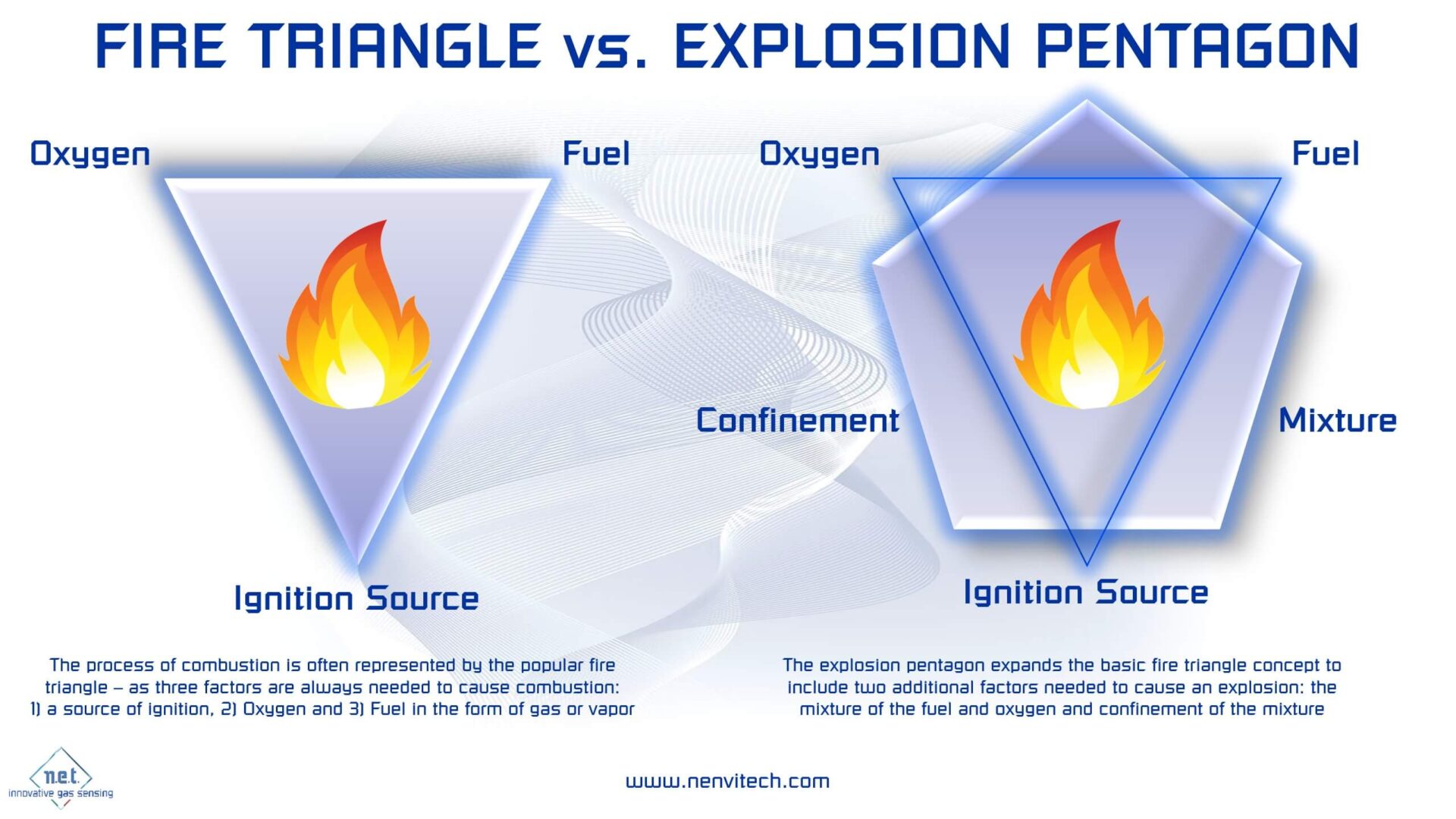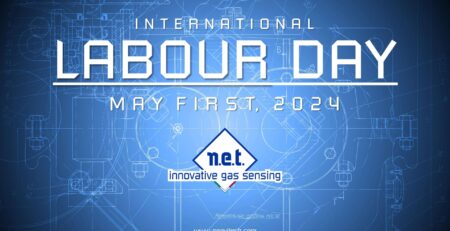THE FIRE TRIANGLE vs. THE EXPLOSION PENTAGON
The process of combustion is often represented by the popular fire triangle – as three factors are always needed to cause combustion:
1) A source of ignition, causing the other elements to combust and create a fire. This can range from a static electricity spark to a spark from metal parts scraping against each other or even when something just gets hot enough.
2) Oxygen: a fire needs Oxygen to be able to burn. Chemically, this is referred to as the oxidant, as opposed to the reductant which is constituted by the fuel being combustion nothing but an exothermic redox chemical reaction.
3) Fuel, in the form of gas or vapor. This is often, but not always, a hydrocarbon, hydrogen or a refrigerant.
Remove at least one of these and you cannot have a fire. In fact, the goal of any gas detection system is often signaling in advance the presence of fuel in the atmosphere.
The explosion pentagon, however, expands and completes the basic fire triangle concept to include two additional factors needed to cause an explosion:
4) The mixture of the fuel and oxygen, which must be in a specific concentration range (within well-defined lower and upper limits) in order to be ignited at a given temperature and pressure.
5) Confinement of the mixture: once combustion of the resultant mixture occurs, confinement (either partial or complete) permits an overpressure to develop, thus enabling a fast-burning flame to transit to an explosion.
Find oud out more about our solutions to detect flammable gases and avoid fires and expolsions.










